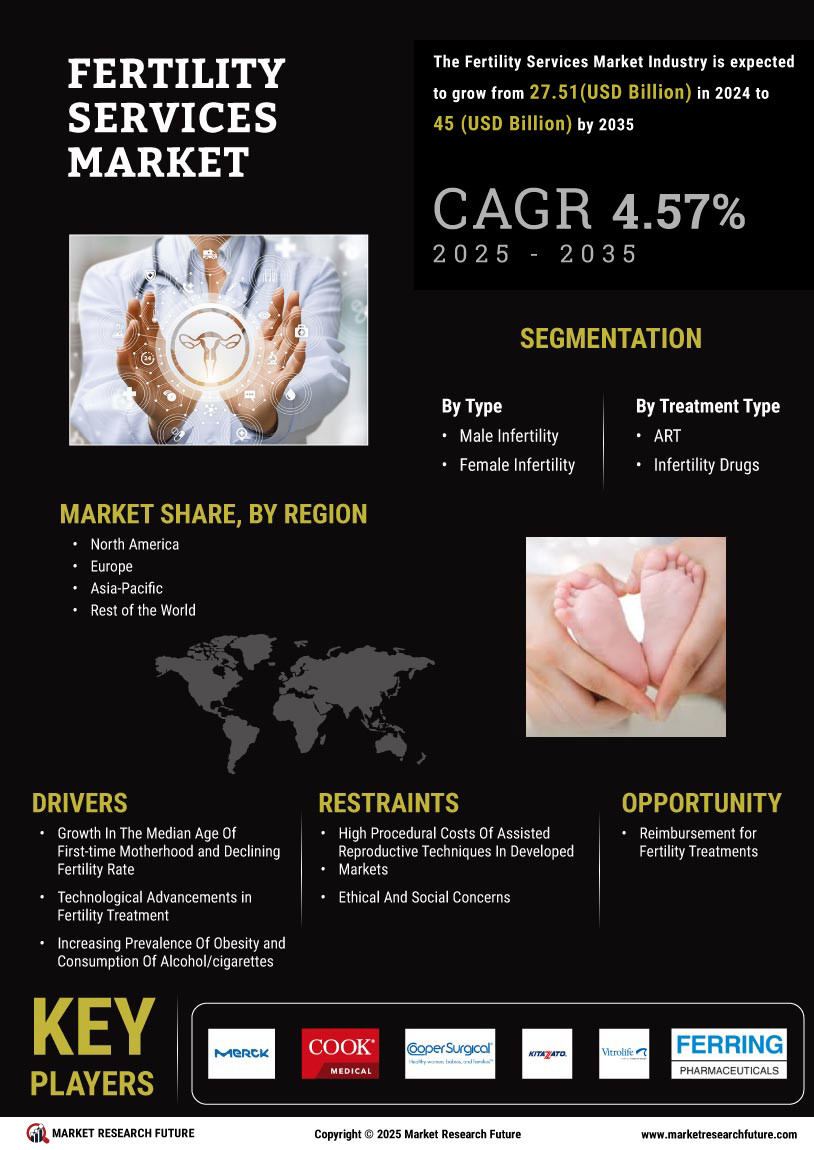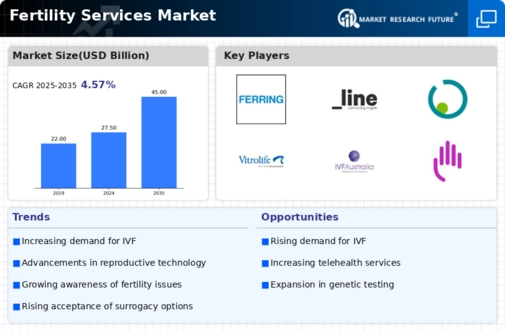Market Growth Projections
The Global Fertility Services Market Industry is poised for substantial growth, with projections indicating a rise from 27.5 USD Billion in 2024 to 45 USD Billion by 2035. This growth trajectory is supported by a compound annual growth rate of 4.58 percent from 2025 to 2035. Such figures highlight the increasing demand for fertility services and the industry's potential to adapt to evolving consumer needs. The market's expansion is likely to be influenced by various factors, including technological advancements, changing societal attitudes towards fertility, and supportive government policies.
Increasing Infertility Rates
The Global Fertility Services Market Industry is experiencing growth driven by rising infertility rates across various demographics. Factors such as delayed childbearing, lifestyle changes, and environmental influences contribute to this trend. For instance, the World Health Organization indicates that infertility affects approximately 15 percent of couples globally. As more individuals seek assistance, the demand for fertility services is expected to rise significantly. This trend is reflected in the market's projected value of 27.5 USD Billion in 2024, with expectations to reach 45 USD Billion by 2035, indicating a robust growth trajectory.
Growing Awareness and Acceptance
There is a notable increase in awareness and acceptance of fertility treatments, which significantly impacts the Global Fertility Services Market Industry. Educational campaigns and social media platforms have played a pivotal role in destigmatizing infertility and promoting available options. As a result, more individuals are willing to explore fertility services, leading to higher demand. This shift in perception is crucial, especially in regions where cultural barriers previously hindered access to such services. The growing acceptance is expected to further bolster the market's expansion in the coming years.
Government Initiatives and Support
Government policies and initiatives aimed at addressing infertility issues contribute positively to the Global Fertility Services Market Industry. Many countries are implementing programs that provide financial assistance or insurance coverage for fertility treatments, making them more accessible to a wider population. For instance, some European nations offer subsidies for in vitro fertilization, which encourages couples to seek help sooner. Such initiatives not only alleviate the financial burden but also promote a proactive approach to reproductive health, thereby enhancing market growth.
Rising Demand for Egg Freezing Services
The Global Fertility Services Market Industry is witnessing a surge in demand for egg freezing services, driven by changing societal norms and career-focused lifestyles. Women are increasingly opting to delay childbirth for various reasons, including education and career advancement. This trend has led to a growing market for oocyte cryopreservation, as women seek to preserve their fertility for future use. The increasing popularity of this service reflects broader societal changes and is expected to contribute to the market's growth, aligning with the projected increase in market value over the next decade.
Advancements in Reproductive Technologies
Technological innovations play a crucial role in shaping the Global Fertility Services Market Industry. Developments in assisted reproductive technologies, such as in vitro fertilization and genetic screening, enhance success rates and patient experiences. For example, preimplantation genetic testing allows for the identification of genetic disorders before implantation, thereby increasing the likelihood of healthy pregnancies. These advancements not only improve outcomes but also attract a broader patient base, contributing to the market's anticipated compound annual growth rate of 4.58 percent from 2025 to 2035.




















